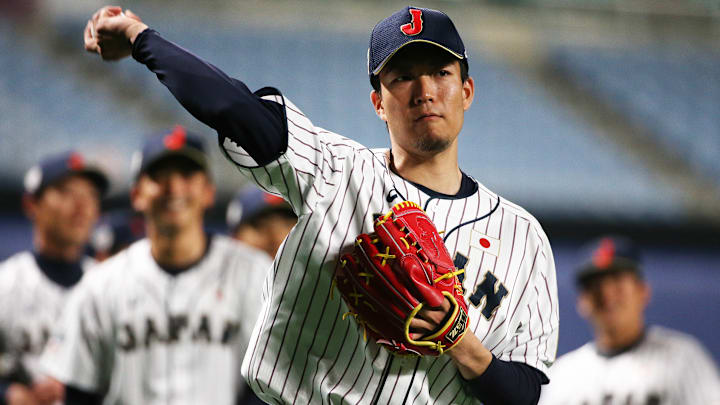The New York Mets are pushing to be the top team in the City of New York. The Mets are capitalizing on the free agent market and healing any puncture wounds caused by a loss in free agency. One major move was the signing of free agent pitcher, Kodai Senga.
The 29-year old Japanese veteran is a solid addition to the Mets rotation, bringing a truck load of championship experience, and a highly-diverse and unique repertoire. Senga brings impressive qualifying numbers with him to Queens, battling through 11 seasons. He went a career 104-51 with a 2.42 ERA, striking out 1486 hitters, only walking 509, and only letting up 360 earned runs on 961 hits in the Japan Pacific League. With such a profile, how does Senga break down physically?
Mets new starting pitcher brings heavy experience and pitch arsenal to Queens, New York
If you don’t watch baseball, but watch Kodai Senga pitch just an inning, you can already confirm that he’s an absolute competitor, bringing aggression and persistence in each and every pitch. He carries a 6’0” frame, weighing 178lbs with an athletic profile, and “rubber” type arm. Kodai has a “poker-face” windup, giving no tip to his offerings. His delivery is repeated well, leading well with the hips, staying closed, until he stomps for good hip rotation, finishing over the top.
Kodai Senga has tweaked his mechanics for more improvement, going from his traditional delivery in 2017 to a now modern, and functional delivery. In the 2017 World Baseball Classic, Senga showcased his profile, which displayed a leg kick and delayed move to the plate; this was very similar to former Yankees right-hander, Masahiro Tanaka. Moving forward to 2021, you can see a delivery that’s very comparable to former Mets pitcher, Marcus Stroman.
Senga’s main weapon is his fastball. I give his fastball a 70 ranking on the 20-80 grade scale. He’s able to throw that fastball for strikes, with solid 70-grade for fastball command. His heater has bite, with late run, recently sitting between 98-99mph, and maxed at 191.9mph (164km per hour). He can work this pitch as an out pitch, and to establish his count, painting the corners, as well as top and bottom shelf. Senga has a true 12-6 curveball, with the ability to throw it for a strike, and work it in the dirt as bait; he’s also equipped with a decent slider, another option when needed. Kodai Senga has apparently created his own pitch, and developed a “forkball”, which will be great to analyze on the Rapsodo software. Senga’s out pitch from an off speed standpoint would be the splitter; this is a highly effective pitch for Kodai, forcing the swing and miss, and forcing lazy ground outs.
Senga’s development on his repertoire over the years is very evident to the analytical eye. What was the key to his success? Plyoball, arm care, and a driveline routine. I can say this from experience, being in baseball development and scouting; the Driveline Baseball programs have developed almost each and every elite arm in the game. Senga has a plyoball routine which focuses on arm care, and arm strength development, hence the increase in consistent fastball velocity from a consistent 95-96mph to 98-99mph.
The Mets have added a powerhouse arm to the rotation, and with this addition, along with Justin Verlander, Max Scherzer, Jose Quintana, and the rest, this may be the hottest staff in the league. Kodai Senga will be a gem to watch under the lights in Queens.
